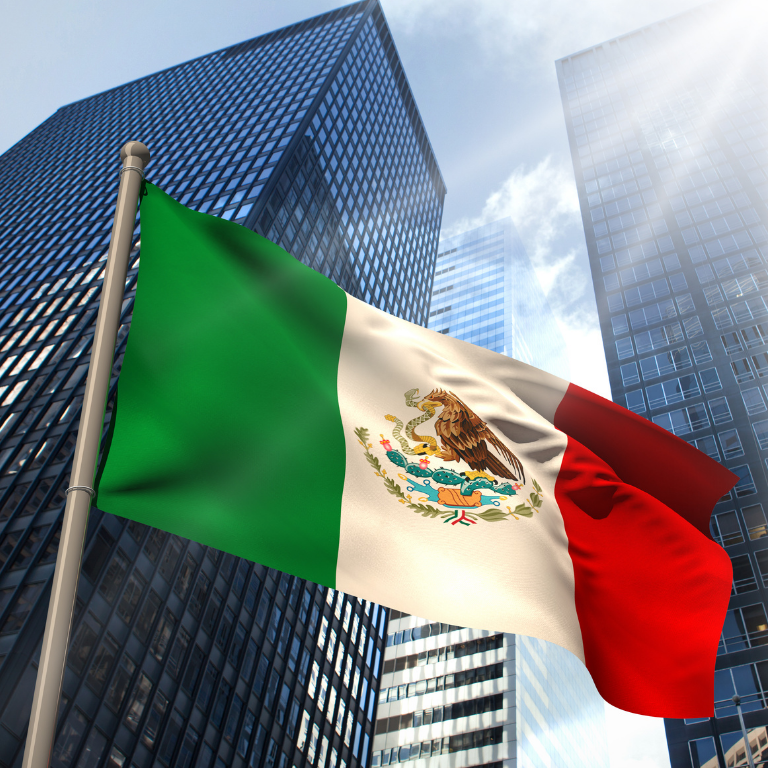The Mexican economy is quickly evolving— in the last 20 years, it has moved from one based heavily on agriculture and manufacturing to slowly offering more services in the automobile, financial, aerospace, telecom, IT, and medical device industries. It is now the second-largest economy in Latin America and the 15th largest in the world measured by 2019 GDP.
However, not all of Mexico is growing at the same rate. There are currently 7 key geographical areas leading the way into developing innovation ecosystems, many of them with the active support of state and local governments. The Bay Area Council Economic Institute recently published a thorough study breaking down the key tendencies in innovation ecosystems on the southern border. In this article, we’ll be going through them to identify which areas are best suited to meet different nearshoring needs.
To no surprise, the national capital and cultural center of Mexico, Mexico City (CDMX) is at the center of venture investment and corporate initiatives. Twelve of Mexico’s fifteen largest companies are all headquartered there. The city makes more than a quarter of the national GDP when combined with the surrounding State of Mexico.
- Mexico City
For the past 21 years, Mexico City has been the recipient of the highest amount of foreign direct investment in the country–USD 129.9 billion total. Venture investment has also been growing here. In 2019 Mexico City accounted for 75% of all venture transactions and nearly 80% of all invested venture capital in the country. Mexico City is also home to leading accelerators such as Endeavor México, and corporate initiatives like Google’s Launchpad Accelerator Mexico and the Latin American headquarters of San Francisco’s 500 Startups. Leading startups such as Clip, Konfio, Justo, and Kavak call the city home.
- Tijuana/ Mexicali/Ensenada (Baja California)
A twenty-minute drive from San Diego is what makes Tijuana and the Baja region unique in nearshore opportunities. Companies like ITJ are enabling fast-growing and high-value market sectors of San Diego to build Centers of Excellence in Tijuana. With a unique BOT model that makes it possible for companies in California to recruit qualified teams at a much faster pace, cities like Tijuana, Ensenada, and Mexicali, have enabled a dynamic cross-border economy in what is known locally as the Cali-Baja region.
With one of the fastest growth rates in Mexico, Tijuana is the country’s fifth-largest city and concentrates much of the state’s economic activity. The region is an important center for binational manufacturing in industries including aerospace, medical devices, biotechnology, automobiles, and electronic equipment, supporting jobs on both sides of the border. Production concentrates in 101 industrial parks, including 65 in Tijuana and more than 25 in Mexicali. Engineering is also a strength–approximately 27% of the students graduating each year from Tijuana’s more than 35 universities are engineers.
Baja California is attempting to create an environment that is conducive to startups but faces several challenges, including a shortage of venture capital, the lack of high-profile exits by local startups, and a few large companies that are locally based. Its assets include a large pool of skilled engineers, a sophisticated manufacturing sector that is working to increase its value-added capacity with new technologies and increased R&D, and proximity to California.
- Monterrey (Nuevo León)
Monterrey is the go-to option for manufacturing and a national center for private businesses and entrepreneurs. Nuevo León leads other states by a significant margin in foreign direct investment, with manufacturing accounting for 58%. The most investment comes from the United States, and manufacturing worker productivity is the highest in Mexico. The city is home to a high percentage of Mexico’s largest companies and many multinationals. Business connections to Texas are particularly strong and business culture more closely resembles that of the US than most other states in Mexico. The city’s startup ecosystem includes an IT sector that is one of Mexico’s largest, with more than 400 ICT companies working in software development, e-commerce, 10 Southern Connection: Innovation Clusters in Mexico, and the Bridge to Silicon Valley fintech and mobile apps.
Approximately 350 of those companies are entrepreneur-led, and serial entrepreneurship is common. Venture capital has been hard to find but this is getting easier. Founders are supported by angel investors, a venture capital community, and local family offices. The dollar value of angel and venture investment is low by US standards but growing, with nearly half of angel investment coming from the founding families of the city’s large companies. Despite these assets, scaling young companies in Monterrey remains a challenge, with much of its engineering and technology talent drawn to the United States.
- Guadalajara (Jalisco)
Guadalajara’s success in attracting global technology companies results in part from a sustained alignment and cooperation between the government, universities, and businesses. Growth in technology is mirrored in a growing number of startups, particularly in fintech, some with dual headquarters in Guadalajara and Silicon Valley. While its base in engineering is strong, the growth of the startup ecosystem has been limited by a small pool of venture capital compared to Mexico City and Monterrey.
- Ciudad Juárez (Chihuahua)
Ciudad Juarez is known for its manufacturing infrastructure. The city hosts 329 maquiladora companies with more than 300,000 employees. It is a center for binational production; key sectors include transportation, computer-related equipment, and electrical equipment. Parts and components flow south from the US for subassembly in Juárez and are re-exported to the US, often for advanced processing.
The startup community in Juárez is small and access to venture capital is very limited. A constrained supply of STEM graduates and low visibility both inside and outside Mexico are also challenges. The strong base in Juárez of manufacturing and binational production, in particular, creates a platform for both investment and the application of innovative and advanced technologies as the city grows its technology and R&D base.
- Mérida (Yucatán)
The capital of the state of Yucatán is attracting investor attention due to its sustained growth, quality of life, appeal to creative industries, and favorable business, and overall safe environment. Although the city does not currently have the amount of manufacturing, entrepreneurship, or technology hubs as the other cities mentioned on the list, the region has become a major magnet for foreign investment, particularly in the automotive and aerospace sectors in the recent decade. While the state’s economy is led by tourism and agribusiness, Mérida is pushing into information technology with the goal of becoming an offshore service center for US companies. The city has generated medium-sized IT companies such as 12 Southern Connection: Innovation Clusters in Mexico and the Bridge to Silicon Valley 4th Source and Plenumsoft, but venture capital is scarce and it remains difficult for startups in Mérida to scale. However, local and global business infrastructure is expected to continue rising in the next decade.
For unlimited access to the full report, click here.


